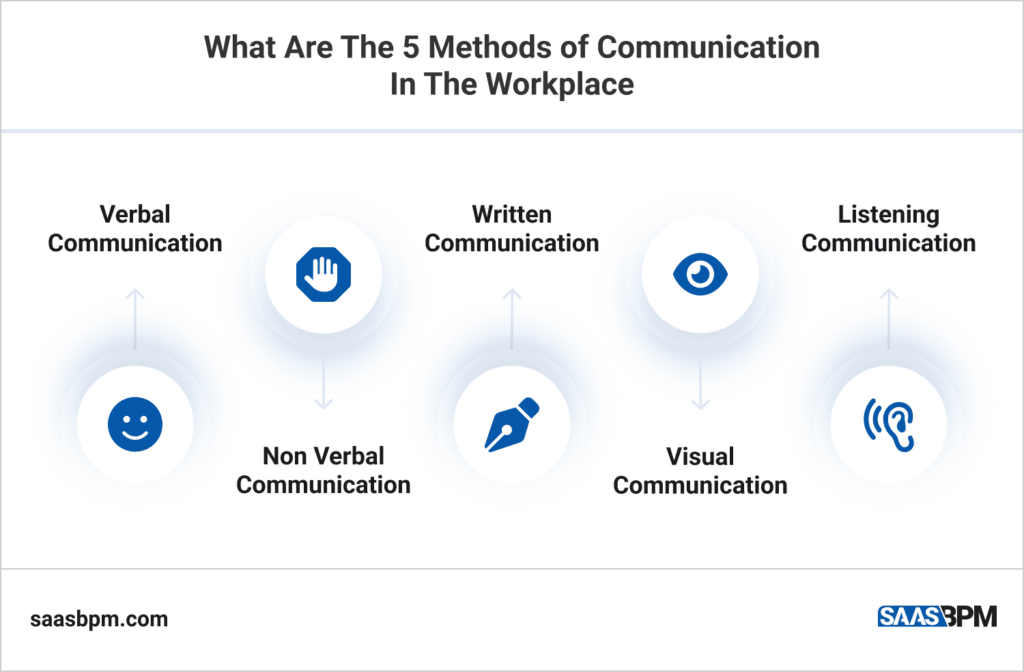The future of work is a rapidly changing landscape. Just 10 years ago, workplace communication was limited to telephone, email, and in-person meetings. But over the last decade, technology has changed drastically and collaboration tools have evolved immensely. With the work-from-home and hybrid work models now representing over 67% of the workforce, in 2023, we are on the cusp of an entirely new way of communicating professionally.
Today’s workplace communication tools include video conferencing, instant messaging platforms, and collaboration software. These solutions make it easy for employees to communicate with one another quickly and efficiently without having to be physically present in one room or even the same country. Instant messaging platforms allow for faster response times than email or traditional phone calls. Also, they enable team members to collaborate more effectively no matter where they are located in the world.
Therefore, employers need to make sure they stay on top of the business technology game and be alert for any tools that can make their teams more productive. As employee efficiency rests on clear, transparent communication, any problems and miscommunication can hurt an organization’s prospects of success. Our business process management tool SaaS BPM facilitates inter-departmental communication and allows close monitoring at every task, project, at any level of seniority.
Without further ado, let’s define workplace communication, explore how it affects a business, and trace its development in 2023.
What Is Workplace Communication And Why Does It Matter?

In today’s highly technological world, the importance of good communication is unquestioned. After all, it is how businesses keep their pace and ensure steady, ongoing progress. However, a lot of times, especially in bigger and more dispersed teams, the principles of workplace communication remain vague. Here is our attempt to shed some clarity:
Definition
Workplace communication is the exchange of information, ideas and opinions among coworkers in an organization. Any business must make sure they have clear, transparent communication channels as this allows for team members to share knowledge quickly, collaborate on projects effectively and build an overall cohesive working environment. Workplace communication encompasses a broad range of activities including phone calls, emails, web conferences, instant messaging, chat rooms and more.
Benefits
Good workplace communication helps to create a streamlined workflow by reducing inefficiencies such as missed deadlines or confusion resulting from miscommunication. Open lines of communication can help create stronger relationships between colleagues from different departments which can lead to better collaboration and innovation. In addition to increasing efficiency and promoting collaboration within the workplace, effective communication also strengthens organizational culture – making employees feel appreciated and valued for their contributions.
Key 2023 Workplace Communication Stats
Now, we all know that workplace communication is of great importance. Digital communication and collaboration tools have increased in popularity over the recent years, especially during the pandemic doom and gloom. In 2023, they have become a normal and focal point in effective professional relationships. Let’s have a look:
- 69% of employees think that lack of communication is their organization’s top issue
- 85% of workers use more than one digital communication device at work
- Employees who feel engaged in workplace communication are 87% less likely to leave their organization
- 91% of office workers have had digital messages misunderstood and/or misinterpreted
- 72% of employees have been frustrated with digital workplace communication tools.
As the latest statistics suggest, poor employee communication leads to misunderstandings, disengagement, decreasing efficiency and poor staff retention. Thus, a proper workplace communication strategy is essential, even in the increasingly connected digital world of 2023.
What Are The 5 Methods of Communication In The Workplace?
Communication in the workplace takes on many forms, from informal conversations to formal presentations. Each type of communication offers its unique benefits and drawbacks, making it important for workers to understand the different methods that exist and how to make the most of them. Here are five popular forms of communication in the workplace:

Verbal
Verbal communication is one of the most common ways for people in the workplace to interact with each other. It can take place within a meeting or via phone calls, emails and other digital formats. Verbal communication allows participants to express ideas clearly and with more detail than non-verbal methods, such as facial expressions or gestures. It also enables quick feedback, allowing for efficient problem-solving if needed. However, it can be difficult to remember what has been said or agreed upon due to its transient nature.
Non-Verbal
Non-verbal communication is any form of expression not conveyed by words, including facial expressions, gestures, body language and eye contact. In fact, according to Albert Mehrabian, 55% of communication is non-verbal, and mere 7% happens with words only. So, fully remote employees have themselves in a bit of a pickle!
Expressions can become an integral part of any conversation and play a role in conveying emotion, understanding intentions and regulating interaction flow between parties involved in a discussion. Non-verbal cues often help individuals convey emotions that would otherwise remain hidden under more traditional verbal forms of communication like emails or voice calls. As a result, nonverbals are an essential tool used at all levels when communicating in the workplace.
Written
Written forms of communication include memos and reports via email, instant messaging, project management systems etc. They allow for permanent records that can be referred back to or shared between colleagues who may not have originally been present during a conversation where ideas were discussed initially.
Written documents are essential for keeping track of projects’ progress over long periods as well as aiding decision-making processes based on facts rather than interpretations made at particular moments in time that could be subject to personal bias or emotions which could affect judgement during conversations or meetings held without documentation as evidence thereof.
Visual
Visuals such as images, videos and presentations offer vibrant ways for teams within organizations to learn about new projects or results achieved throughout their workdays. They allow messages to be conveyed more quickly than relying solely on words due to their appeal when engaging viewers’ attention.
Listening
Listening is simply paying close attention so you can accurately interpret what someone else is saying without jumping ahead or adding your own opinions. This skill is paramount – it allows coworkers to view their team members with the respect they deserve. It entails listening intently and responding thoughtfully. Such a collaborative environment leads to greater success on both individual and collective levels due to a platform for constructive criticism, collaboration, appreciation and expression that is fostered naturally.
Key Takeaways
Workplace communication is key to the success of any organization. 2023 has already seen a steady tendency for digital methods of communication, with a clear integration of new technologies into daily operations. Companies are now focused on improving personal connections and creating stronger relationships between employees. As workplace communication evolves, it is important for employers to recognize its importance and understand how best to incorporate different methods within their organizational structures.

